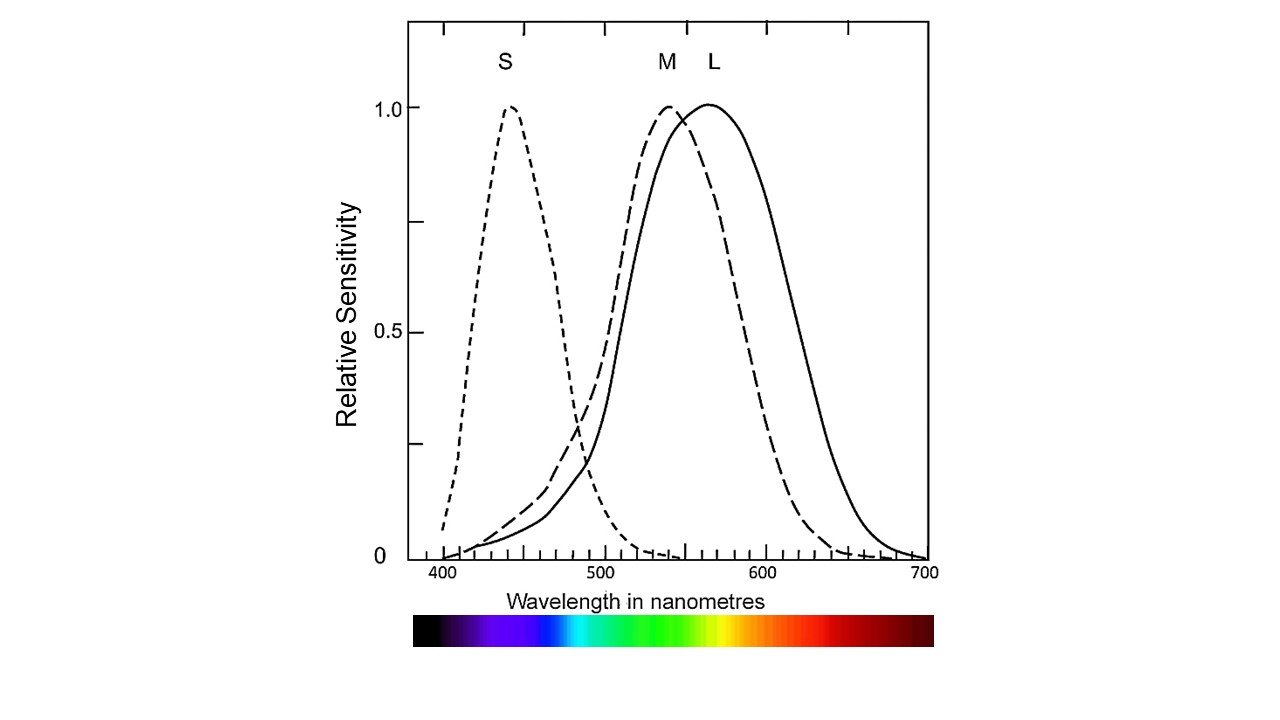Parts of the eye
Parts of the eye. Image source: https://my.clevelandclinic.org/health/body/21823-eyes
1) Blind Spot
A small circular area at the back of the retina where the optic nerve enters the eyeball and which is devoid of rods and cones and is not sensitive to light.
2) Cones
Cones are a special type of light-sensitive cell located on the retina, which are able to absorb light under high levels of illumination. Most people have 3 types of cones sensitive to (or able to absorb) light with a range of Short, Middle-length and Long wavelengths. These are abbreviated as the S-cones, M-cones and L-cones respectively.
The relative amounts of light absorbed by each type of cone are compared to give colour information about objects.
The graph shown plots the relative sensitivity for each cone type shown on the y-axis, for each wavelength shown on the x-axis. The sensitivity relates to the amount of light that each cone type can absorb at each wavelength. Each cone type absorbs light over a wide range of wavelengths. Note that one nanometer is one billionth of a meter.
Relative sensitivities of the three types of cones, sensitive to short (S), middle (M) and long (L) wavelengths. Image adapted from R.W. Pridmore (see Figure 1 - Atten Percept Psychophys (2021) 83:1 797–1803).
3) Optic Nerve
The nerve that carries messages from the retina to the brain.
4) Pupil
The pupil is the opening in the middle of the coloured part of your eye (iris) which appears black. The pupil gets bigger or smaller in response to changes in levels of illumination.
5) Retina
A layer at the back of the eyeball containing cells that are sensitive to light (i.e. cones and rods). When light is absorbed by these cells, they trigger nerve impulses that pass via the optic nerve to the brain, which results in conscious experiences of colours.
The retina has approximately 120 million rods and 6 million cones.
6) Rods
Rods are a special type of light-sensitive cell located on the retina, which are able to absorb light in low levels of illumination. They are concentrated in the outer areas of the retina.
The figure shows the sensitivity of the rods, compared to the three types of cones.
Relative sensitivities of the rods and three types of cones, sensitive to short (S), middle (M) and long (L) wavelengths. (Rod and cone sensitivities adapted from e.g. J.K. Bowmaker & H.J. Dartnall, Journal of Physiology (1980) 298:1 501-511)





